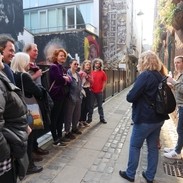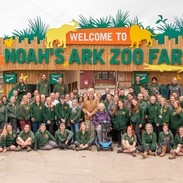2.16. We’re all in it together
Key Takeaways 2.15
In a nutshell
Giving back feels good.
How can you support your community, in money, product, time or involvement?
Charitable giving
Take the time to ask your staff and customers what causes matter to them, devise a plan to help, and then spend some time explaining the story behind your charity approach.
Many businesses are also now committing to a set percentage of money, time or product per year. Mechanisms supporting and promoting this approach include:
1% for the Planet, created in 2002 by Yvon Chouinard (founder of Patagonia) and Craig Mathews (founder of Blue Ribbon) represents a global network of businesses, individuals and environmental organisations tackling the planet’s most pressing environmental issues by committing a minimum of 1% of annual sales per year.
Pledge 1%, pioneered by Salesforce, is a movement of businesses that pledge to give 1% of equity, 1% of profits, 1% of product and/or 1% of employee time to worthy causes annually.
Paying it forward
This ‘paying it forward’ approach is outlined in the book Authentic Marketing by Larry Weber. Weber recommends asking the following big questions:
Who in the world would benefit from access to our products or services but cannot currently afford them?
How can we set up a programme to provide access to our products and services for free to those people in need?
One of the most tangible things that a company can do is the paying it forward approach. Once you have identified people who would benefit most from your product or service but are unable to afford it, you can develop a plan to incorporate an element of free distribution as part of your business plan.
For the ultimate in clear, powerful marketing messages, the old promotional tool of ‘Buy One, Get One Free’ can be reinvented as ‘Buy One, GIVE One Free.’
This has been successfully used by a number of innovative, thoughtful businesses, such as Mindful Chef, a healthy food recipe and delivery service, that runs a programme called ‘One Feeds Two.’ With every meal purchased, they donate a school meal to a child in poverty, which has amounted to millions so far.
Not all organisations can commit to the full buy one, give one model. If this doesn’t work for your business, consider instead a ‘Buy One, Give SOMETHING’ approach.
Local events and support
Employees can be encouraged to make suggestions and/or vote on options for even greater engagement.
A simple way to give this some structure is to examine a spectrum from people to the environment. If you also plot the distinction between donation of time and money, you can map a community strategy very quickly.
For example, social care, food banks, and support groups can help people in need. These can be balanced with initiatives that are beneficial to the environment, such as litter clear ups, river management, pollution reduction, and so on.
Local events and support
The horizontal axis determines what degree of cash you are donating, as opposed to time.
The vertical axis shows the balance of causes supported between the planet and people.
Use it to have a discussion about what your charity approach should be.
VisitBritain/VisitEngland








